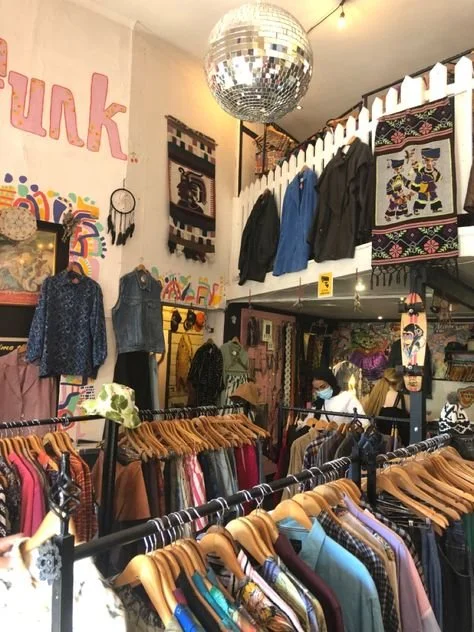VINTAGE RENEWAL & THRIFT CULTURE
Vintage style and thrifting culture are increasingly rising in popularity, and there are many reasons behind this that I'll explore in this article. Second-hand shopping is a positive alternative to fast fashion because fashion is one of the leading contributors to environmental waste. The fashion industry generates over 92 million tons of textile waste globally and many items are made from synthetic fibres which can take up to 200 years to decompose. What started as a cheap alternative has become a cultural and sustainable movement.
In the past, vintage fashion was seen as outdated and not very ‘trendy’. However, in the modern era, there’s a huge revival of previous trends, such as the 90s and Y2K. I interviewed some of the youth of London, and I'll quote them throughout this article. “Old fashion trends are backing a comeback. Charity shops are a great way to find these clothes and are cheaper and more eco-friendly. As a generation, we’re more considerate and care about the environment as it benefits us.” We are re-imagining these trends and second-hand clothing is the best method of finding these past styles that are no longer being produced.
There are multiple reasons for the current revival of thrifting, one of them being due to Gen Z’s eco-consciousness. As a generation, we’ve grown up with ‘climate anxiety’ as we witnessed the effects of it first-hand and subsequently are more aware and concerned about the state of the earth. Social media also helps promote environmental issues as there is constant exposure to viewers of education and activism. Another reason is the uniqueness of second-hand pieces, many vintage or second-hand pieces are ‘dead stock’ as they’re no longer in production, making them a rarity. Past-era design details are also very different from modern-day designs- the fabric, cuts, and craftsmanship. Finally, celebrity stylists have a great influence on why thrifting has increased in popularity. Thrifted and archived pieces worn by celebrities on red carpets garner attention from the mainstream media, causing large-scale interest.
Thrifting isn’t just a choice; it’s a lifestyle. “There used to be a stigma around charity shopping, but now people are just doing what’s best for them and the environment.” It’s not just charity shops though, vintage has made its way to online stores and apps. Shops like Depop, Vinted, etc, are used by millions of people monthly. “There are no flaws to second-hand buying, it’s much more sustainable than fast fashion and isn’t just limited to shops- you can trade clothes with friends.”. Choose borrowing over buying.
I shop almost exclusively second-hand as it not only fits my aesthetic but also prevents more clothing from ending up in a landfill. The planet is ours to inherit and as the younger generations we need to shop sustainably for the future of our world. Not only that but pre-loved clothing carries a story with it that we can continue to tell.
Shop mindfully and remember that vintage fashion is more than just a trend- it's a cultural shift.


